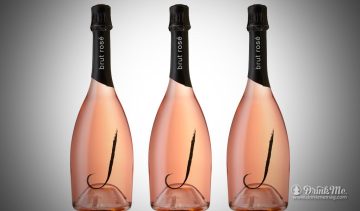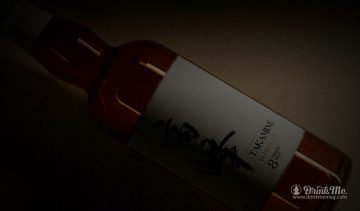By Spencer Spellman
“Habushu,” I say to the bartender, in my thick southern drawl as I point at a large jug towering over all the other liquor bottles. “Habushu?” the bartender responds disconcertedly. “You want habushu? The snake wine?” I nod, “Yes, a glass of snake wine. Straight up.” The bartender pours me a small glass, slides it to me, and leans on the bar awaiting my reaction. I wasn’t sure who was mocking me more – the bartender or the venomous habu pit viper who was also staring at me, but from the bottom of the jar.
When I decided on Okinawa for my first trip to Japan, I was interested in one thing: scuba diving. Unbeknownst to many, Okinawa, with clear blue water teeming with marine life all around it, is home to some of the best scuba diving in the world. But there’s more drink than the big one to dive into. Think Japan is just sake and lagers? Think again!
When I stepped out of my hotel lobby in Naha, the capital of Okinawa, I was met with rain. But as the German saying goes, it never rains in the brew hall. So I headed to Zuisen, a distillery founded in 1887 and located mere blocks from the renowned 14th century Shuri Castle.
“Awamori, not sake,” my guide explained. “It’s our tropical drink. Like the varying climates of California affects wine, so do the varying climates of Japan affect the distilling and brewing process.” While awamori is indigenous to Okinawa, it actually has Thai influences, as it originates from lao kao, something of a distilled Thai whiskey. It uses Thai rice and is fermented using black koji mold, which is also native to Okinawa. Awamori is often served with water, although there are also awamori cocktails.
In the tasting room, I smelled many small cups of awamori and was taken aback by their pungent aroma. Despite its aroma, however, it drank nicely. It is full of complexity and offers a touch of sweetness. Their kusu (awamori aged at least three years) was half the price of aged whiskey in the U.S. so I stocked up and then was onto lunch.
(Note that if you’re driving, it’s prohibited to taste any awamori during the tour.)
As we walked up to a counter, my guide explained the habushu’s pit viper. She flexed her muscles, “It’s said to pass down energy, as well as other characteristics, of the more voluptuous kind.” I had seen some things while traveling, but this was a real head-scratcher. Judging from her coyness, I decided against pushing the envelope.
She continued to explain that the jar that held the snake also held awamori. A dead habu snake is dropped into a large jar of awamori, turning it into habushu, and giving the already pungent drink an even stronger aroma. Legend has it that habushu possesses medicinal properties transferring characteristics of the pit viper to those who drink it. One such characteristic is increased energy since a habu snake can go as long as a year without eating.
After lunch it was time to get out of Okinawa’s metropolitan capital. After all, I was on an island and wanted to see beyond the concrete jungle.
A couple hours after leaving Naha and heading north up the coast, I pulled up to Orion Brewery whose beer you’ve likely seen on Japanese menus or in specialty beer stores. Orion, one of Japan’s largest beer manufacturers, makes a mild beer that goes swimmingly with Okinawa’s subtropical climate.
“For your happy time,” was the tour guide’s greeting as he waved for our small group to follow him. As it turns out, that’s not a pick-up line but rather Orion’s slogan. For an English tour, make a reservation (60-minute tours are free and include a complimentary tasting).
On my way back to Naha I stopped at one of Okinawa’s few craft breweries: Okinawa Brewing Company’s Yomitan Taproom. As an ale fan, I was delighted to find out that in a country full of lagers, Okinawa Brewing Company only brews ale: a pale ale, honey IPA, watermelon ale, chocolate oatmeal stout, raspberry ale, and sweet potato-flavored ale.
Curious how craft breweries are received in a country saturated with mass-produced lagers, co-founder and brewer Anthony Vashro confirmed my suspicion: locals have been slow to adopt craft beer. Of the six breweries on the Okinawan islands, only three are craft; Helios and Nihede Breweries are subsidiaries of large awamori brewing companies.
Before my flight took off, I stopped in at Helios Craft Beer Pub. With just one swig left of my habushu, I called the bartender over for my check. “Excuse me,” I said, after he handed back my change. “The habu snake. One local mentioned that it passes down a rather voluptuous characteristic…” Before I could finish my sentence, he was already laughing. “Ah yes, the libido,” he replied, chuckling to himself. “The habu is said to be able to mate for over 24 hours.” Laughing, I thanked him, and tipped back the last swig of habushu.
Zuisen Distillery
098-884-1968
1-35, Shuri Sakiyama-cho,Naha-City, Okinawa Prefecture ,903-0814
www.zuisen.co.jp
Orion Brewery
0980-54-4103
Japan Okinawa Nago City Agarie 2-2-1
www.orionbeer.co.jp
Okinawa Brewing Company
Brewery (tours by appointment only)
098-958-5504
904-0322 Okinawa-ken, Nakagami-gun, Yomitan-son, Namihira, 2003-1
www.okinawabrewingcompany.com
Okinawa Brewing Company
Yomitan Taproom
098-923-2671
904-0304 Okinawa-ken, Nakagami-gun, Yomitan-son, Sobe, 1137−1
www.okinawabrewingcompany.com
Helios Craft Beer Pub
98-863-7227
1-2-25 Makishi, Naha, Okinawa Prefecture 900-0013













